Cardington Airships Sheds - GB |
| No. 1 Shed & No. 2 Shed in History | The future of Hangars | Wokipi Aerostation | |||
Cardington is a village in the United Kingdom, located in Bedfordshire. But it evokes above all two airships hangars for the enthusiasts that we are. |
They constructed an airship hangar, the No. 1 Shed in 1915 , with these dimensions: 700-foot-long, 180ft wide and 158 ft high, to enable them to build two rigid airships, the R-31 and the R-32. Some 800 people worked there in 1917, most of them travelled daily from Bedford. Shorts also built a housing estate, opposite the site, which they named Shortstown. |
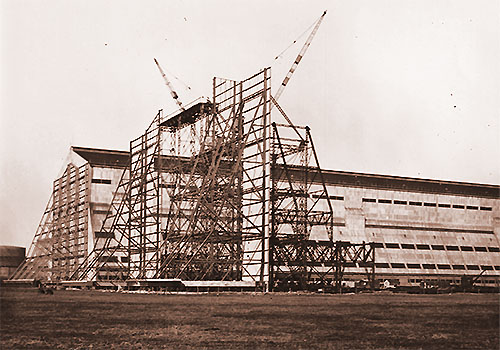 |
 |
In preparation for the R 101 project the No. 1 shed was extended between October 1924 and March 1926; its roof was raised by 35 feet and its length increased to 812 feet. In 1926, a huge airship mast was constructed for the civil programme, built by the Cleveland Bridge and Engineering Company under the direction of Major General Sir William Liddell, Director of Works and and Buildings at the Air Ministry. |
R-100 and R-101 |
The R-101 ascended for the first time on October 14, 1929; the R-100, December 16th. |
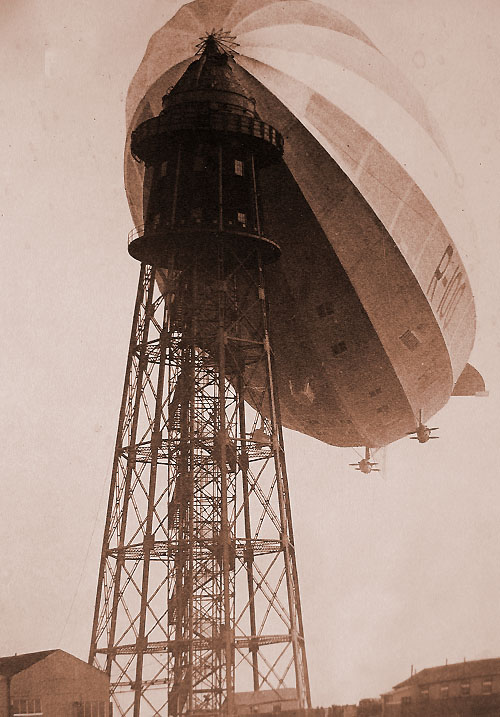 |
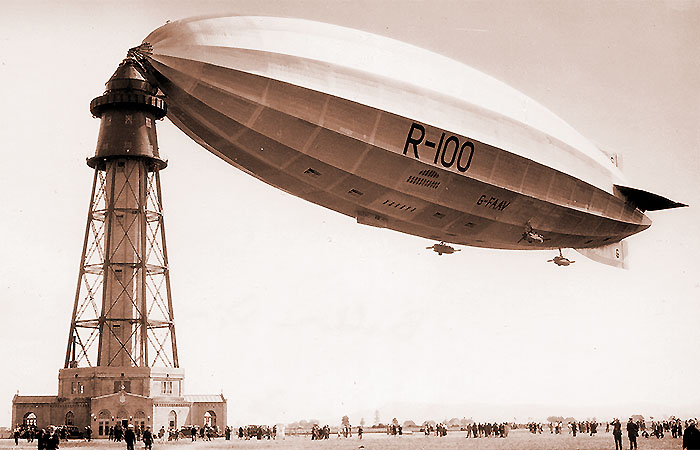 |
|
The R-100 moored at the mast of Saint-Hubert Airport - Canada - 1930 |
The R-100 moored at the mast of Cardington |
| This success of the opposing team and the holding of the Congress of the "colonies", October 19, pushed the builders of the R-101 to advance the date of his first flight to India. The test flights were far from over but they were ignored. The R-101 rose from Cardington in the evening of October 4th, for Ismailia, Egypt, stopping on the road to Karachi, under the command of Lieutenant Carmichael Irwin. |
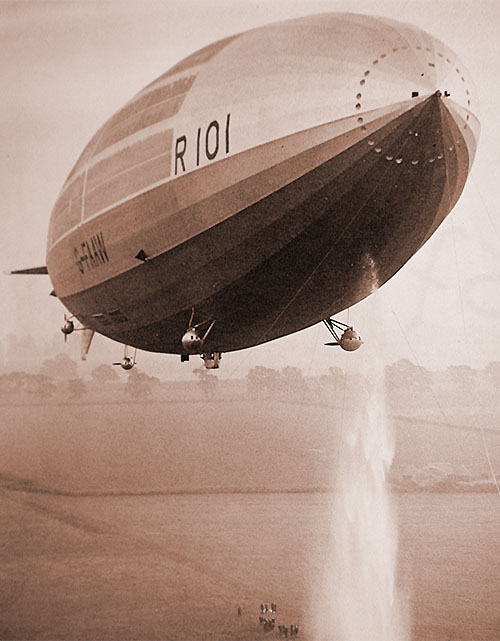 |
The R-101 airship dropped 5 tons of water from its ballasts to gain altitude. At 2:15 am, he wipes a storm over the English Channel. Gusts of wind are tearing its upper outer shell. This causes a rupture of one of the gas balloons and the aircraft, which gradually loses altitude, crashes on a hill, near the town of Allonne, 4 km southeast of Beauvais (La France). The shock will explode the 140,000m2 of hydrogen. 48 people out of 52 on board died, there were only 4 survivors. Among the burn victims: Lord Thompson, Minister of Air; Sefton Brancker, Director of Civil Aviation; the engineers who designed the R-101 and Major Scott, former commander of the R-34. The British aeronautics was beheaded, the project of "imperial lines" annihilated. |
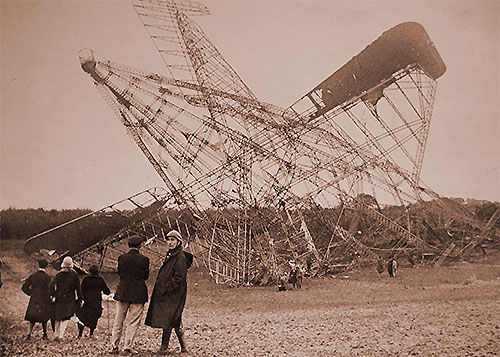 |
|
| The Picard town offered to the United Kingdom, a few days after the tragedy, the plot of land on which the airship had crashed, parcel which is today marked by a stele, inaugurated in October 1933. All buried together in a great grave at Cardington, even those who were identifiable. |
|
The R-101 airship dropped 5 tons of water from its ballasts |
the R100, despite a more successful development program and a successful first Atlantic crossing, was deflated in December 1930 and its structure suspended in the hangar. Its dismantling, to be sold as scrap metal, began in November 1931 and was completed in February 1932. The R100 had made only one transatlantic round trip. Cardington then became a storage base. |
| Barrage balloons |
| In 1931, the Station was nearly closed, with only a skeleton maintenance staff of some 44 people remaining. With the threat of war looming at the end of the 1930s Cardington was back in business with the development and creation off thousands of kite balloons. Preparation for meeting this demand started in November 1936 when the station became known as Royal Airforce Station Cardington. In 1936 / 1937 Cardington started building barrage balloons; and it became the No. 1 RAF Balloon Training Unit. At its peak Cardington was producing some 26 balloons a week. It sounded simple but every balloon had to be large enough to carry a couple of miles of steel cable and required a trained crew who could monitor the balloon 24 hours a day. Also required for each was a winch and motor transport. No 1 Balloon Training Unit was formed (known as No 1 BTU Cardington) The first Commander of the No 1 BTU was Sqdrn Leader H. F. Luck who had strong airship credentials. He was part of the successful R34 airship flight across the Atlantic both ways back in 1919 and was later attached to the R101 airship programme. In 1939 the No 2 Balloon Training Unit at Rollestone Camp, Salisbury was dissolved and part of its functions and staff transferred to the Number 1 BTU at Cardington. For both airships and barrage balloons, Cardington manufactured its own hydrogen, in the Gas Factory, using the steam reforming process. Simultaneously the station was a training centre for the barrage balloon operators, Balloon Riggers, Fabric Workers, MT (Mechanical Transport) and Balloon Handling. In is recorded a party of 35 Polish airmen received balloon training in March 1941 and by May 1941 WAAFS (Women's Auxiliary Air Force) began arriving on the camp for training. And by 1943 some 10,000 balloon operators and a further 12,000 driver/operators had been trained. The tower (1926) was demolished in 1943 to help the war effort. The two airship hangars ceased being part of the RAF Cardington site in the late 1940s and they were put to other uses. |
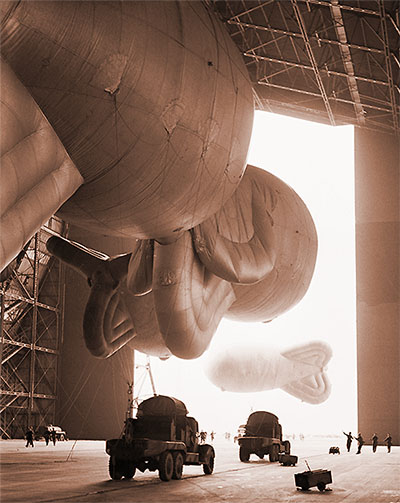 |
| No. 1 Shed & No. 2 Shed in History | The future of Hangars | Wokipi Aerostation | |||